The Children’s Book Review | June 14, 2014

Stephen Biesty has worked as a freelance illustrator since 1985 creating a wide variety of information books for both adults and children. He studied illustration at Brighton Polytechnic gaining a BA, and then went on to do an MA at City of Birmingham Polytechnic where he specialized in historical and architectural cutaways. He lives in a small Somerset village with his wife and son.
Stephen became internationally successful in the 1990s for his best-selling ‘Incredible Cross-Section’ books published by Dorling Kindersley which have sold over 3.5 million copies world-wide and have been printed in 16 languages. These world famous illustrations regularly appear in magazine articles and have been reused many times for lucrative spin-off products such as pop-up books, CD Roms, souvenir posters, calendars and jigsaws.
He has won several prestigious awards including ‘The New York Times Best Illustrated Book Award’ in 1993, and ‘The UK Literary Association Children’s Book Award’ 2004. His illustrations have appeared in important exhibitions including ‘The Magic Pencil’ at the British Library in 2003 selected by Quentin Blake, and the ‘You Are Here’ exhibition of information design at the Design Museum in 2005.
He has created illustrations for high profile architectural projects such as the Millennium Dome in 1999 and the redevelopment of the Royal Opera House Covent Garden in 2000. He has also worked on digital media projects which involve moving images, such as an animated film for the new exhibition at Tower Bridge in 2009, and a website for the USS Constitution Museum Boston in 2010 to celebrate the bicentenary of this famous American warship.
Latest published book …
The Story of Buildings (Candlewick, 2014)
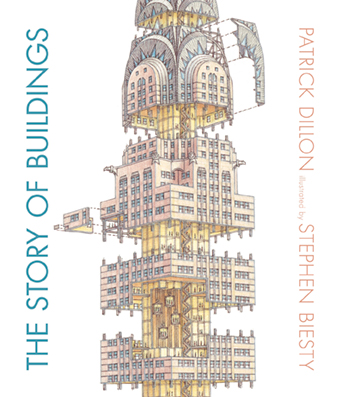
Inspired by …
The many visits I have made over the years to famous buildings. From historic Palaces, Castles and Cathedrals to modern day Skyscrapers, Sports Stadiums and Airports.
I love the sense of place and atmosphere of each different building. I enjoy the drama of their interiors, they make me want to explore the structure by making a cross-section drawing.
Art medium used …
Pencil crayon and black pen.
Artistic process …
I always begin a project with lots of research and background reading. As I read I make lists of details that I can use to fill the drawing with life. If its possible to visit the subject thats even better. Then I’m ready to start drawing.
First I make small thumbnail sketches to work out the composition. Then I make a full size working drawing with all the details from my research included. I make a copy of this and label the details so that I can send it to an expert for checking.
What I’m trying to do when making a cross-section drawing is to really open up and explain the structure. The important thing is not to lose the identity of the subject in the process. Its a balancing act, that’s the challenge.
Finally I make any amendments and additions to the drawing and then colour it using either watercolour or coloured pencils. I prefer to work entirely on paper, I only use a computer for research and communication.
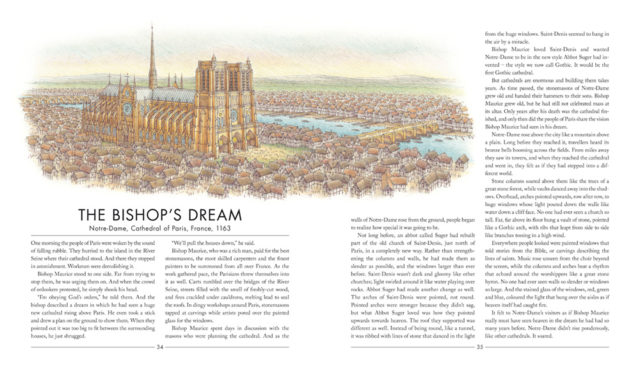
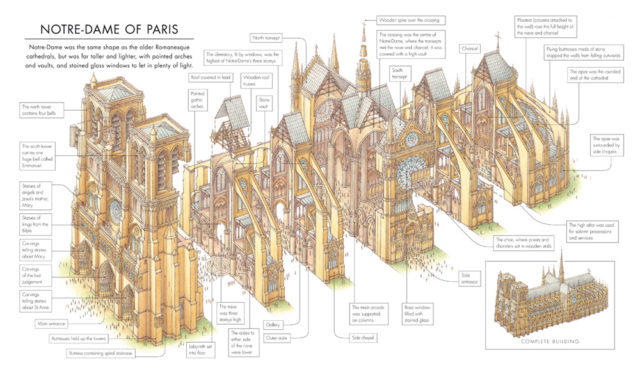
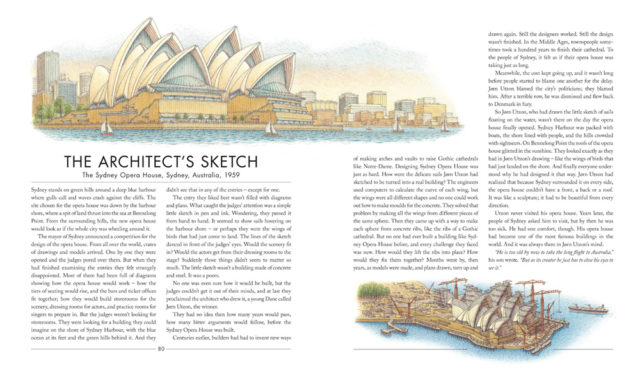
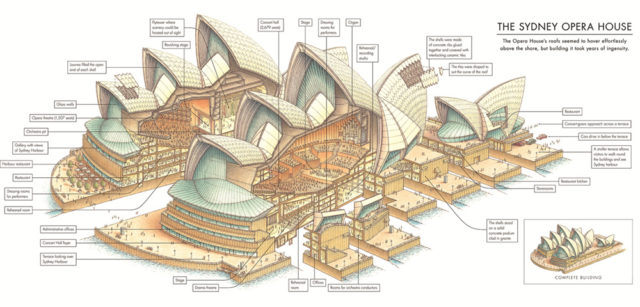
Favorite place to create & illustrate …
I have a small studio at the end of my old stone cottage in rural Somerset. There is a library on the ground floor for my reference books and computer. Upstairs there is my desk art materials and archive of artworks. My window looks out over the beautiful 12th century village church, its a very quiet and peaceful place to work which I love.
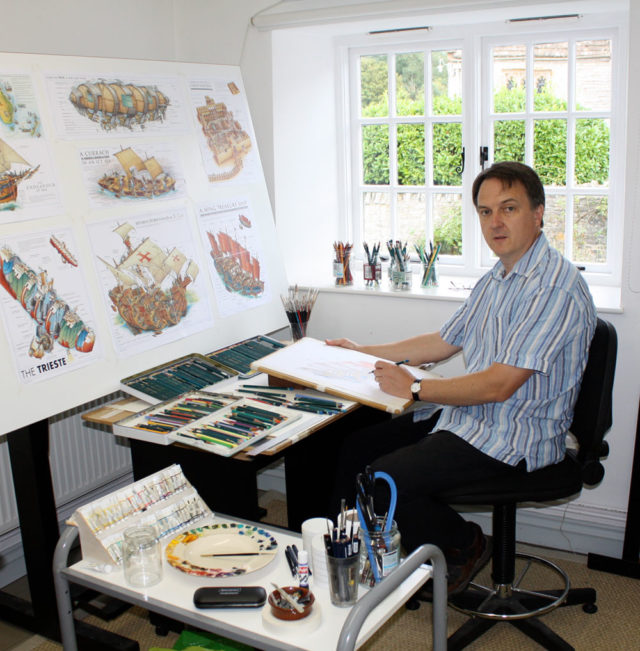
Most used art supply or tool …
Colured pencils. I originally only used these for my preliminary roughs, but I now use them for many of my finished artworks. I find they help me to create a slightly looser style of artwork which I really enjoy.
Illustrator idols …
My favorite contemporary illustrator is David Macaulay. But I also greatly admire the work of two British illustrators from the 1950’s Alan Sorrell and Leslie Ashwell Wood.
Alan Sorrell created magnificent reconstruction drawings of historic buildings in Britain which were used to explain them to visitors. His drawings are very atmospheric with dark moody skies. You get an extremely powerful sense of place when you look at them.
Leslie Ashwell Wood created many explanatory drawings of mechanical things. His most notable works are the cutaway drawings he made for the Eagle Comic. I find his illustrations inspiring because they are not only well research but also very beautiful. This shows how visually appealing a cutaway diagram can be.
All-time favorite children’s book you didn’t illustrate …
‘Cathedral’ by David Macaulay. He manages to create such a feeling of epic scale in his lively free-hand perspective. His drawings of buildings have such energy and presence on the page.
A literary character to create art with …
Clarence the Ninth Earl of Emsworth from the ‘Blandings’ novels by P.G.Wodehouse. I think I would enjoy being a guest of the eccentric Lord Emsworth at Blandings Castle, and working with him on a drawing of his stately home.
Currently working on …
I am in the early stages of planning and researching an illustrated book all about Space. This is an exciting project for me and I’m busy thinking about the sorts of drawings I can make to explain this enormous suject to young readers.
Connect with Stephen Biesty …
Stephen has just added a shop to his website which offers a selection of signed and hand numbered limited edition giclee prints for sale: www.stephenbiesty.co.uk/shop.html
Discover more picture book illustration inspiration on The Children’s Book Review by following along with our Illustration Inspiration series.


2 Comments
Pingback: Stephen Biesty Research | nathanbarnettgdes3004
Pingback: Philip Reeve